The Nuremberg Chronicle (Liber Chronicarum in Latin or Das Buch der Croniken und Geschichten in German) is one of the most important books in the history of printing.
Produced on commission from Nuremberg merchants Sebald Schreyer (1446-1520) and Sebastian Kammermeister (1446-1503) in 1493, the 600 page text is attributed to Nuremberg doctor and humanist Hartmann Schedel (1440-1514). Drawing heavily from earlier, medieval and Renaissance sources, Schedel purports to tell the history of the Christian world from its creation to the time of writing. The text incorporates its fair share of myth and fable – with geographical and historical information on European counties and towns written alongside tales of epidemics, monsters and comets.
What makes this work remarkable however, is not so much the text itself, but rather the beauty and skill of the images that accompany it – bringing to life the biblical and historical events, major cities and important figures from myth and history within the text. Indeed, the Nuremberg Chronicle is the most lavishly illustrated book of the 15th century. In total, the work boasts 1809 images, produced using 645 woodblocks, many of which were used more than once. A mere 72 blocks were used for the 596 portraits of emperors, popes and other celebrities, for example – so each was used to represent 8 or 9 different people, changing only the caption.
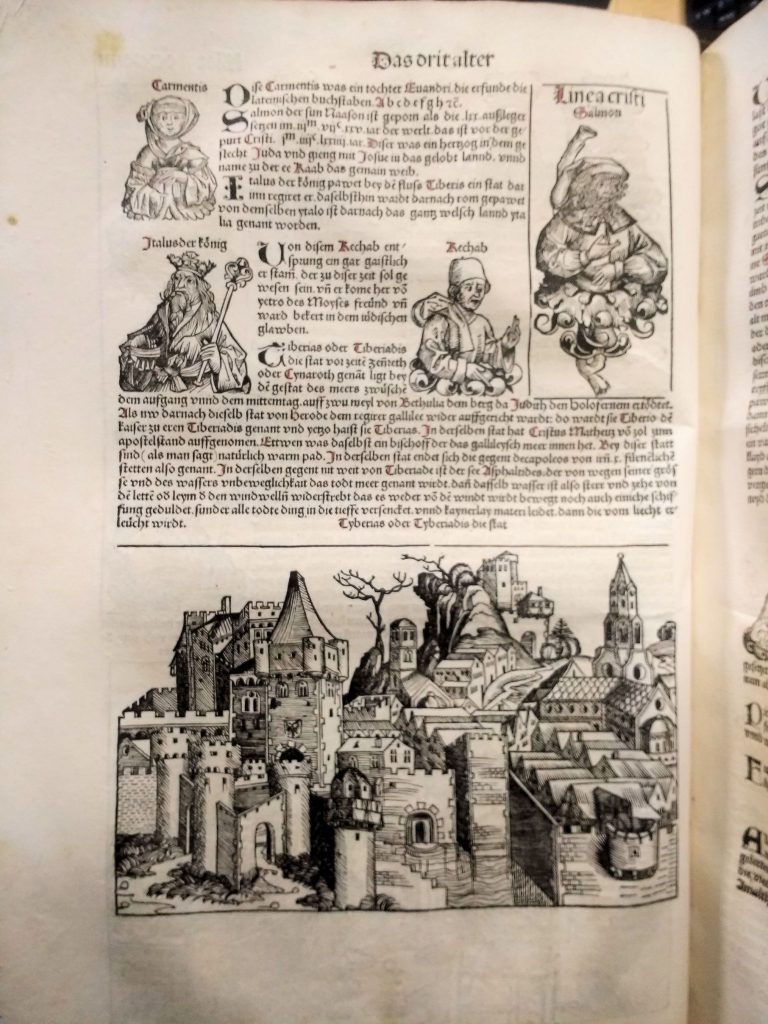
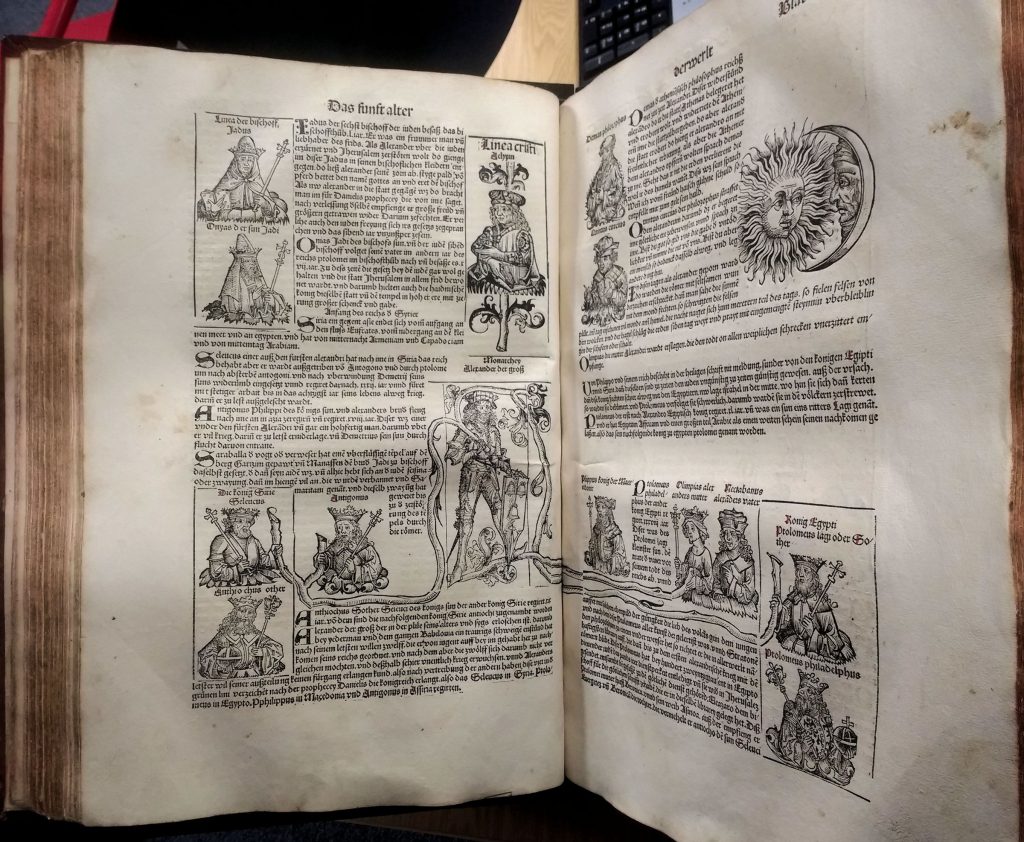
As you can see from the above image, the woodcut images were incorporated closely within the letterpress text. A feat of considerable technical skill on the part of those involved in its production, this resulted in a particularly elegant and satisfying mise-en-page. To enable this, the work was first carefully planned in manuscript drafts (called ‘exemplars’) before printing. Remarkably, complete exemplars of both the Latin and the German edition of the Nuremberg Chronicle survive, and indicate that the images were sketched first, with the text inscribed to fit within the remaining space.
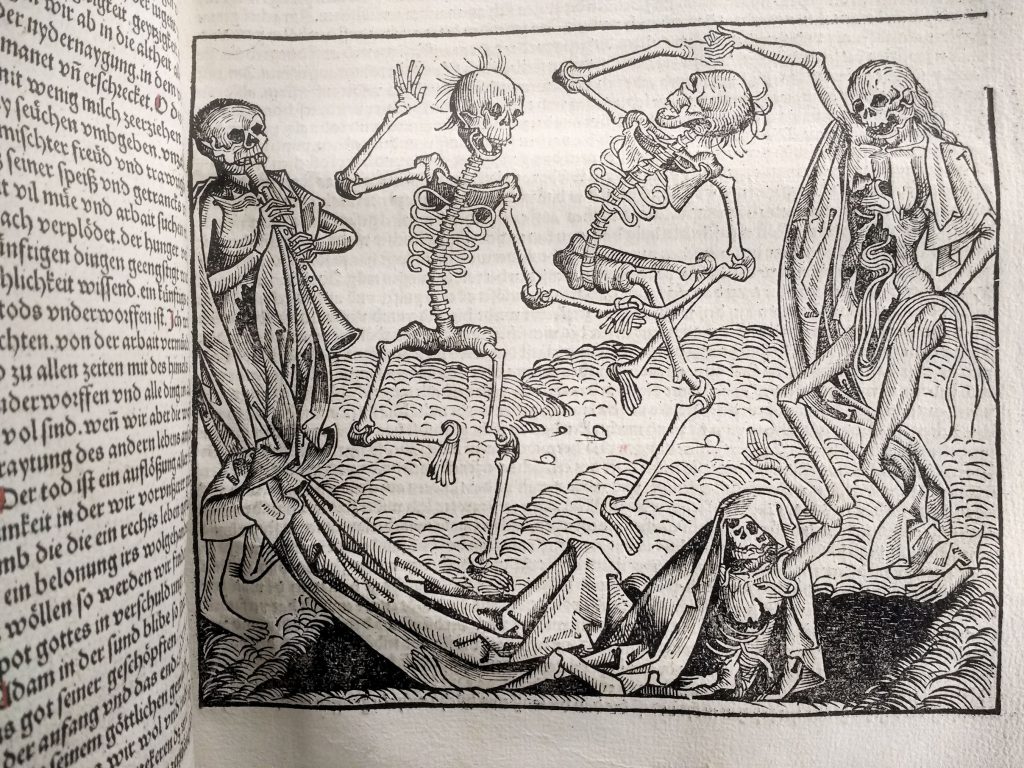
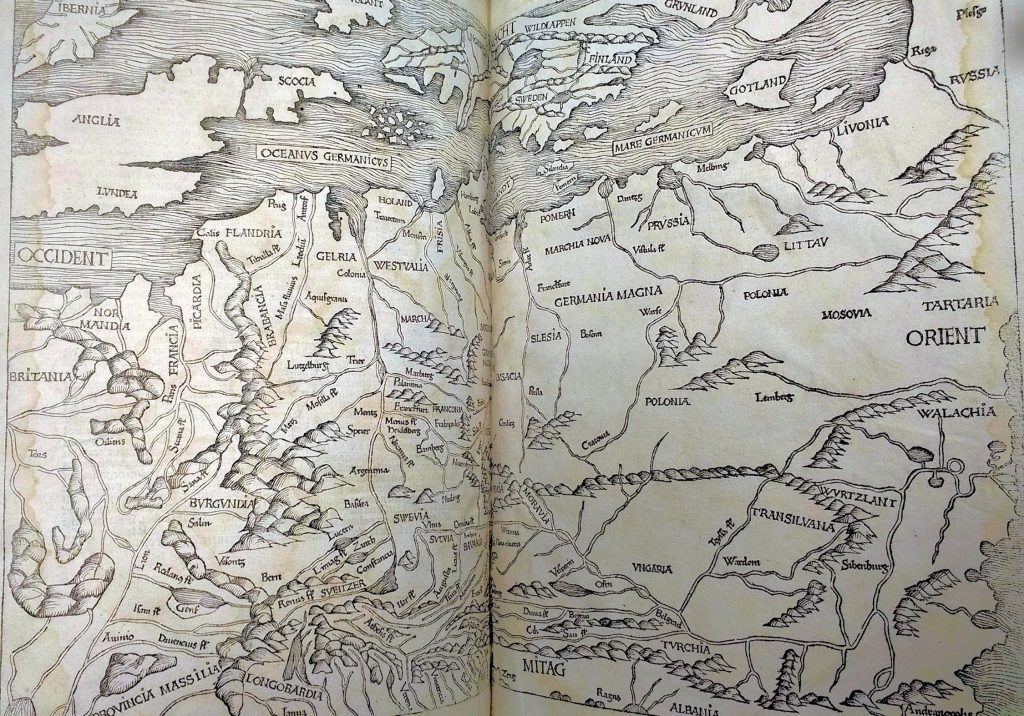
The woodcuts and exemplars for the Nuremberg Chronicle were produced by Michael Wohlgemut (1434-1519) and his stepson Wilhelm Pleydenwurff (c.1460-1494), and the work was printed and published by Anton Koberger (1445-1513) – the largest printer and publisher in Germany at the time. Koberger printed the Latin version on the 12th July 1493, with a German translation following shortly after, on 23rd December 1493. The University of Liverpool Special Collections and Archives (SC&A) is fortunate enough to hold three copies of the 1493 Latin edition, and one of the German translation. A final copy of the Chronicle in SC&A is a pirated edition, printed by Johann Schönsperger (d. 1520) in Augsberg in 1500.
That SC&A holds so many copies of such an early printed book is perhaps rendered a little less surprising when we learn that no other 15th century book survives in as many copies as the Nuremberg Chronicle, undoubtedly an indication of its popularity at the time, as well as its enduring interest to collectors and researchers alike. Indeed, the SC&A copies were given to us by some of the most important donors in the history of the library – Charles Sydney Jones, Henry Tate, Thomas Glazebrook Rylands and Robert George Morton, and we were recently very excited to have all five SC&A copies of this important work on display in the reading room at one time, having beeen ordered up by Dr. Nina Adamova, as part of her research into marginalia in copies of the Chronicle.
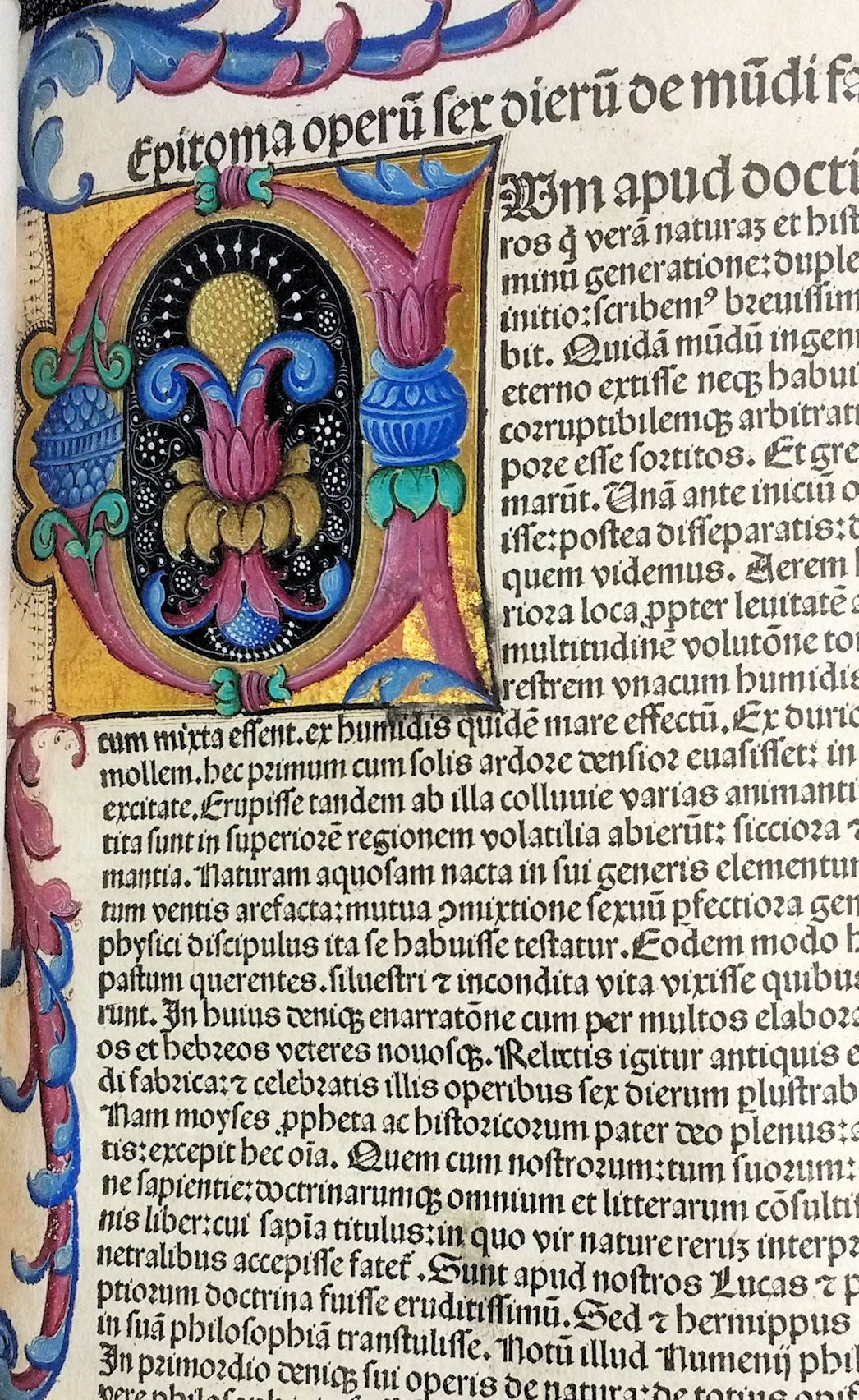
References and further reading:
Wilson, Adrian. The making of the Nuremberg Chronicle. (1976)
Bayerische Staatsbibliothek, ed. Worlds of learning: the library and world chronicle of the Nuremberg physician Hartmann Schedel (1440-1514). (2015)